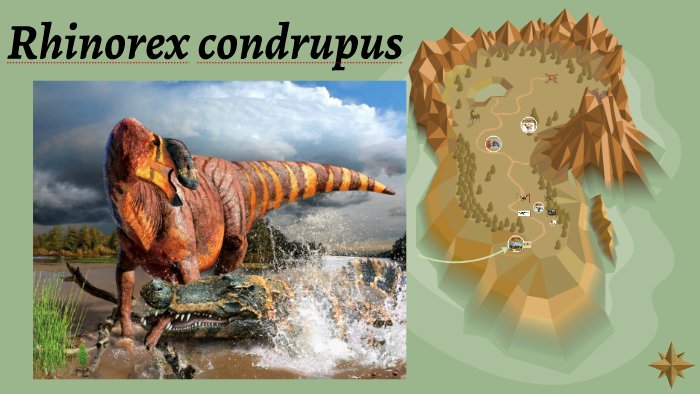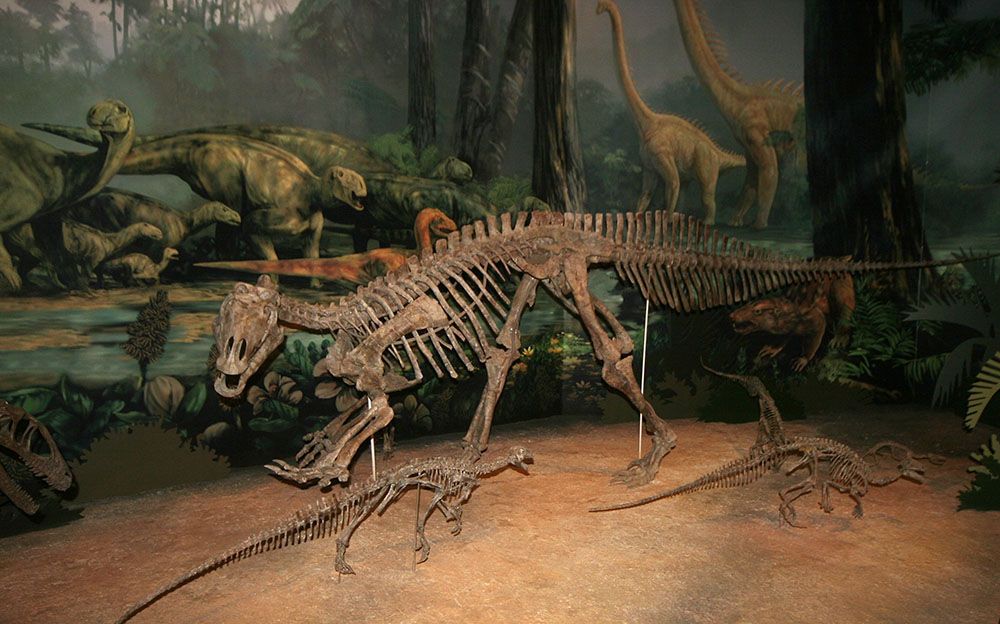Paleontologists Dr Rodney Scheetz of Brigham Young University’s Museum of Paleontology and Dr Terry Gates of North Carolina State University and North Carolina Museum of Natural Science have described a new species of hadrosaur from the Upper Cretaceous Neslen Formation of central Utah.

Rhinorex condrupus attacked by a Cretaceous crocodile. Image credit: © Julius Csotonyi.
The new hadrosaur, scientifically named Rhinorex condrupus, lived during the Cretaceous period, about 75 million years ago.
It was about 9 meters long, weighed over 3,800 kg, and lived in a swampy estuarial environment, about 80 km from the coast.

“We’ve found other hadrosaurs from the same time period but located about 320 km farther south that are adapted to a different environment,” said Dr Gates, who is the first author of a paper describing Rhinorex condrupus in the Journal of Systematic Palaeontology.
“This discovery gives us a geographic snapshot of the Cretaceous, and helps us place contemporary species in their correct time and place.”
“Rhinorex condrupus also helps us further fill in the hadrosaur family tree.”

Rhinorex condrupus skull and its reconstruction; abbreviations: nap – nasal anteroventral process; ppd – premaxilla posteroventral process dorsal expansion. Scale bar – 10 cm. Image credit: Terry A. Gates / Rodney Scheetz.
Hadrosaurs are usually identified by bony crests that extended from the skull, but Rhinorex condrupus lacked a crest on the top of its head; instead, it had a huge nose.

Dr Gates explained: “the purpose of such a big nose is still a mystery. If this dinosaur is anything like its relatives then it likely did not have a super sense of smell; but maybe the nose was used as a means of attracting mates, recognizing members of its species, or even as a large attachment for a plant-smashing beak.”
Dr Gates and his co-author, Dr Scheetz, came across its fossilized skull and bones in storage at Brigham Young University.

First excavated in the 1990s, the fossils had been studied primarily for its well-preserved skin impressions.
When the paleontologists reconstructed its skull, they realized that they had a new hadrosaur species.
“We had almost the entire skull, which was wonderful,” Dr Gates said.
Source: sci.news








